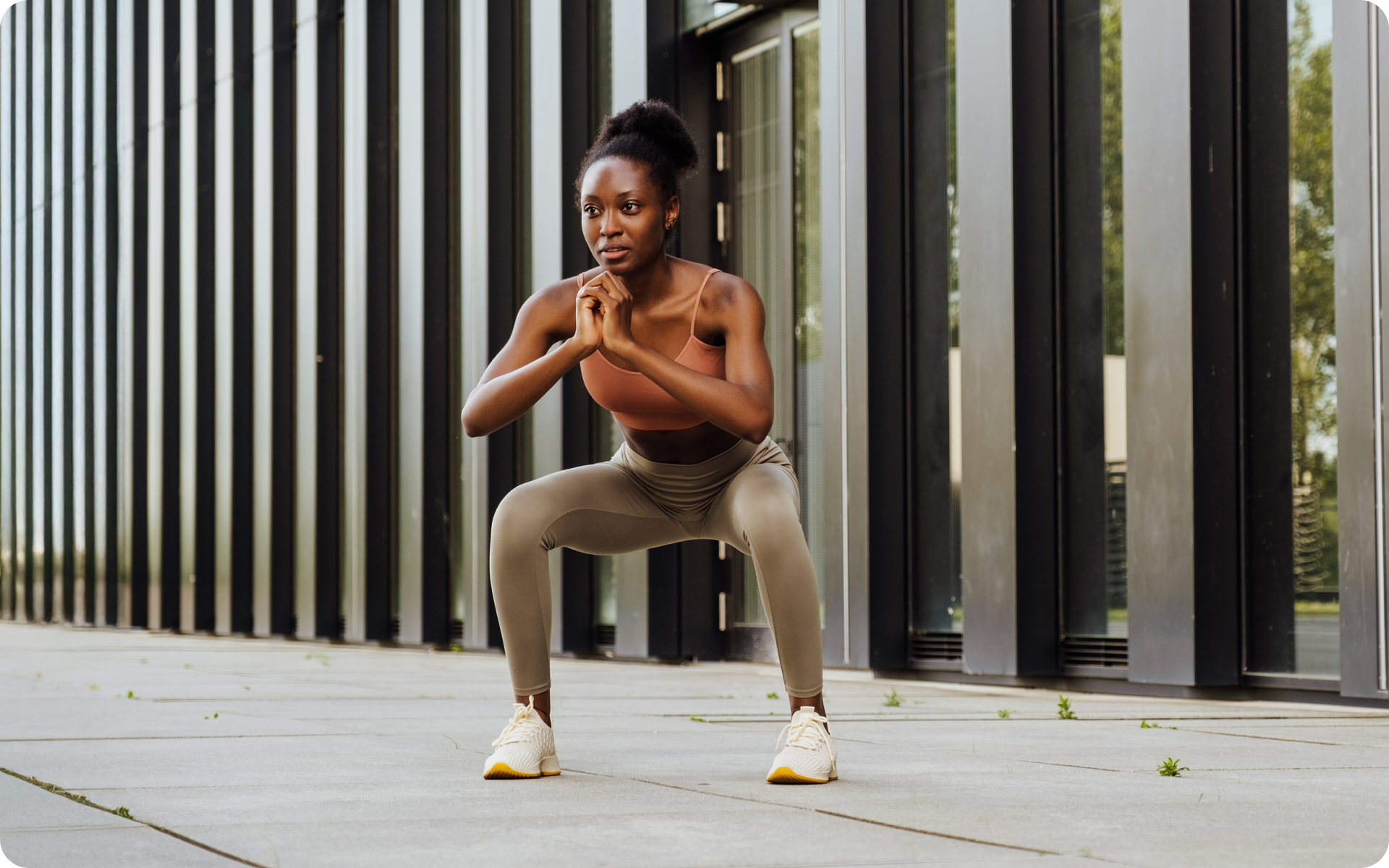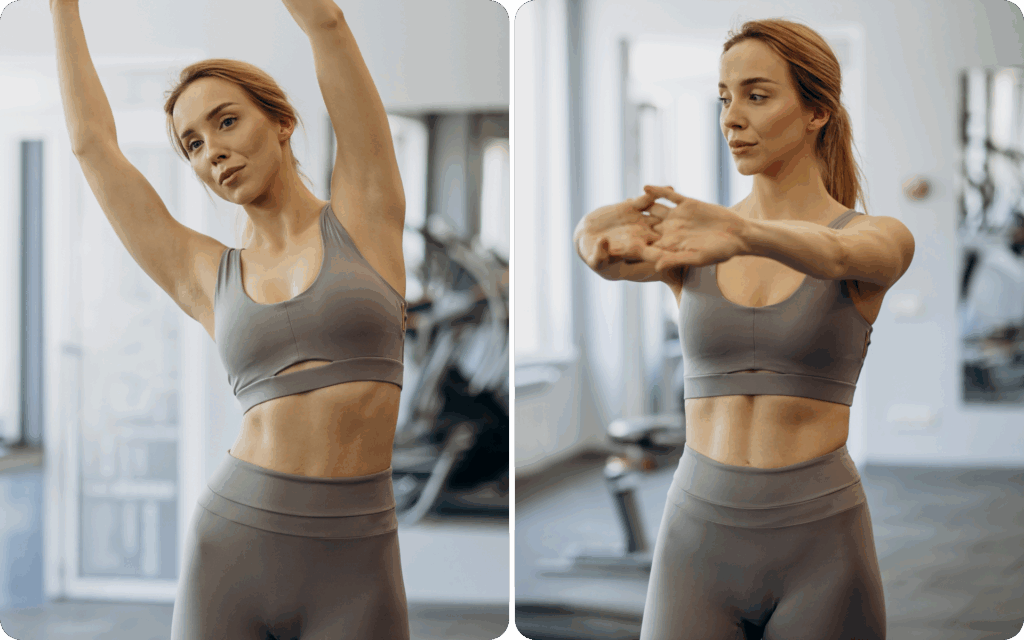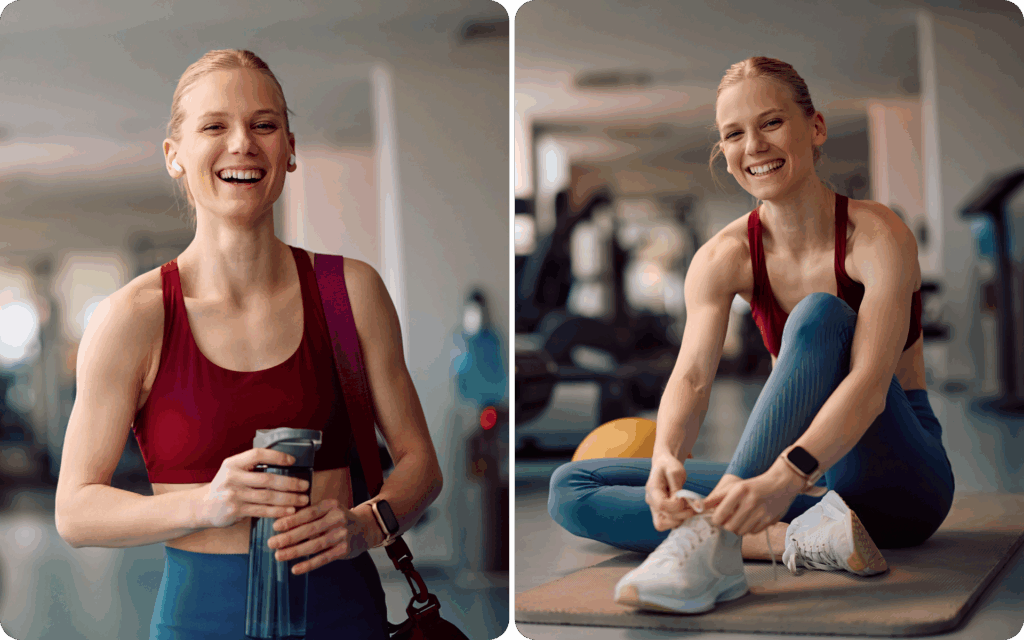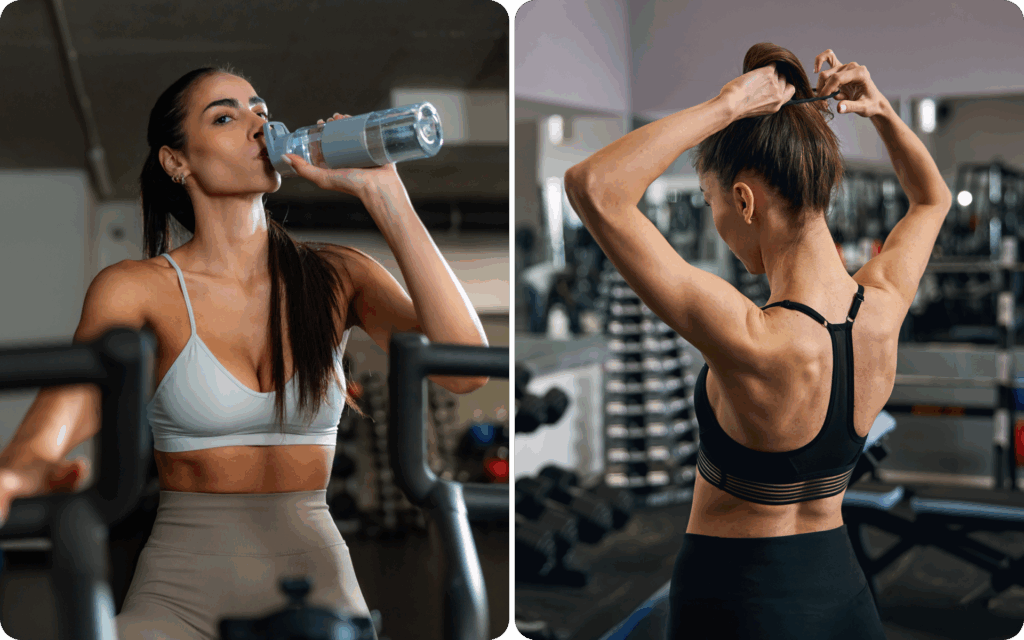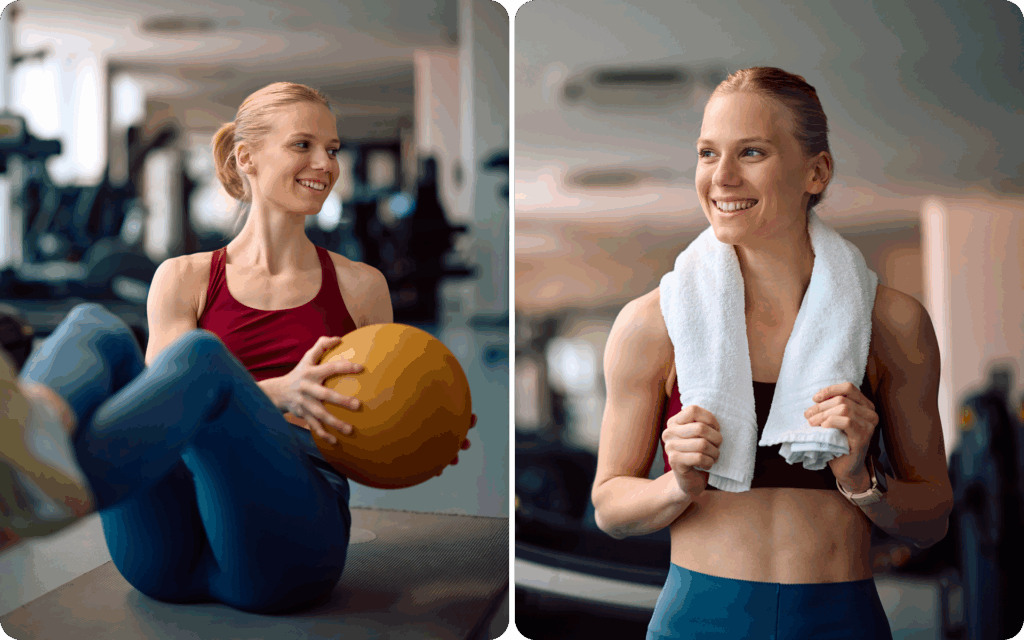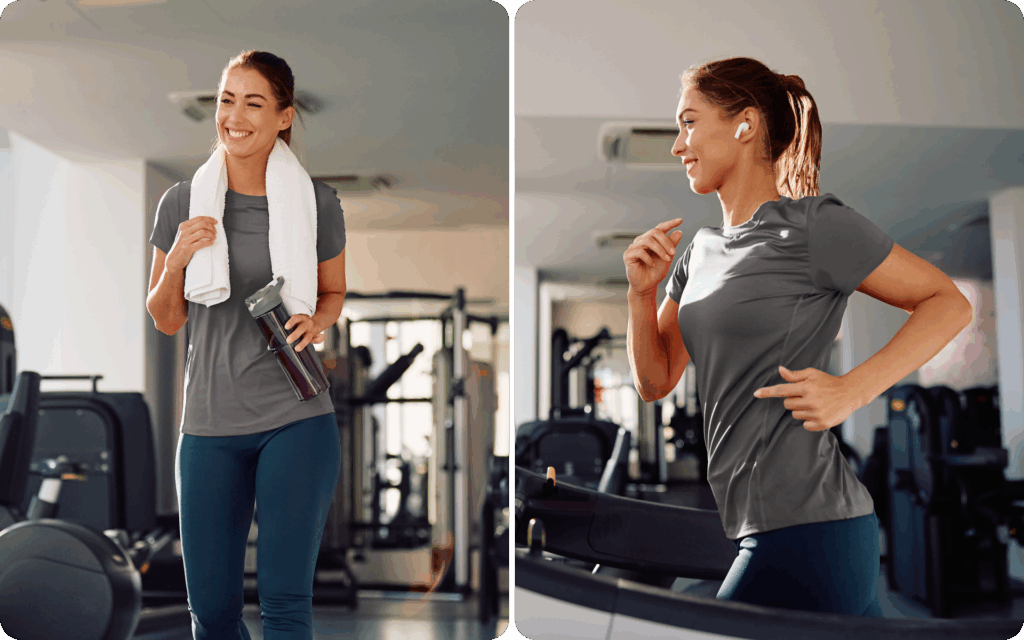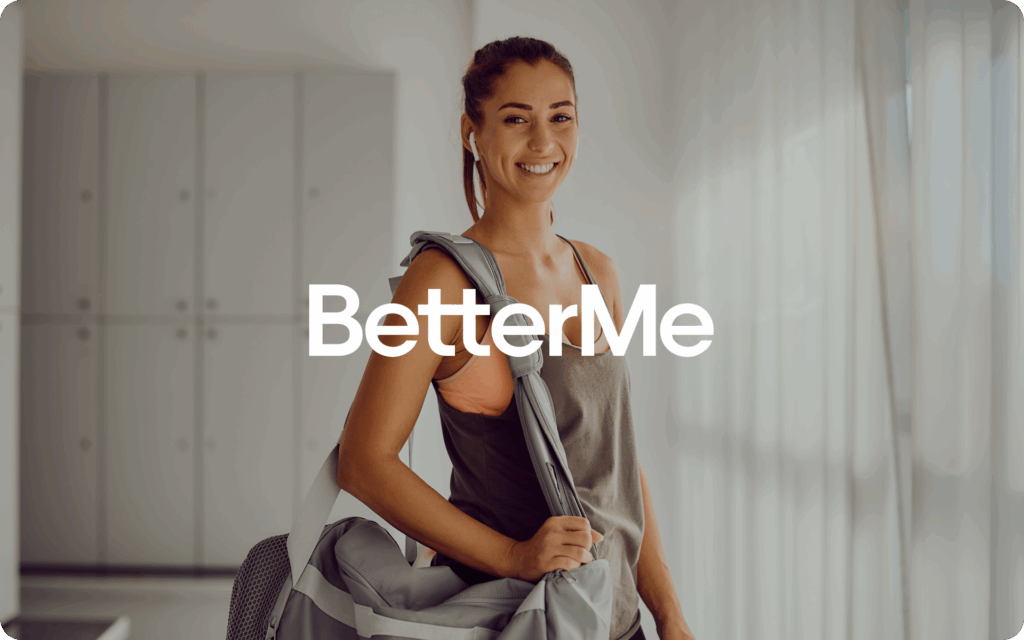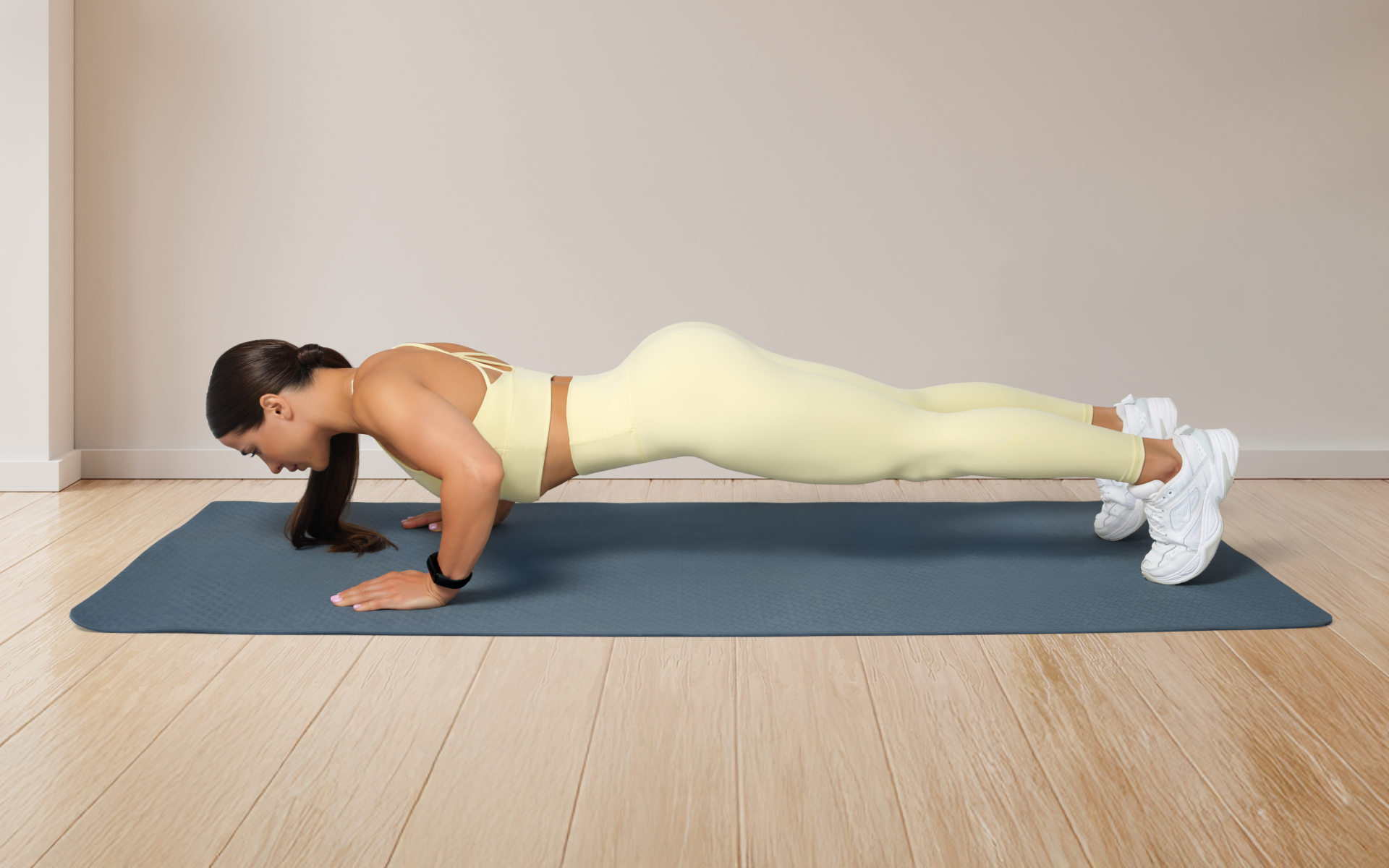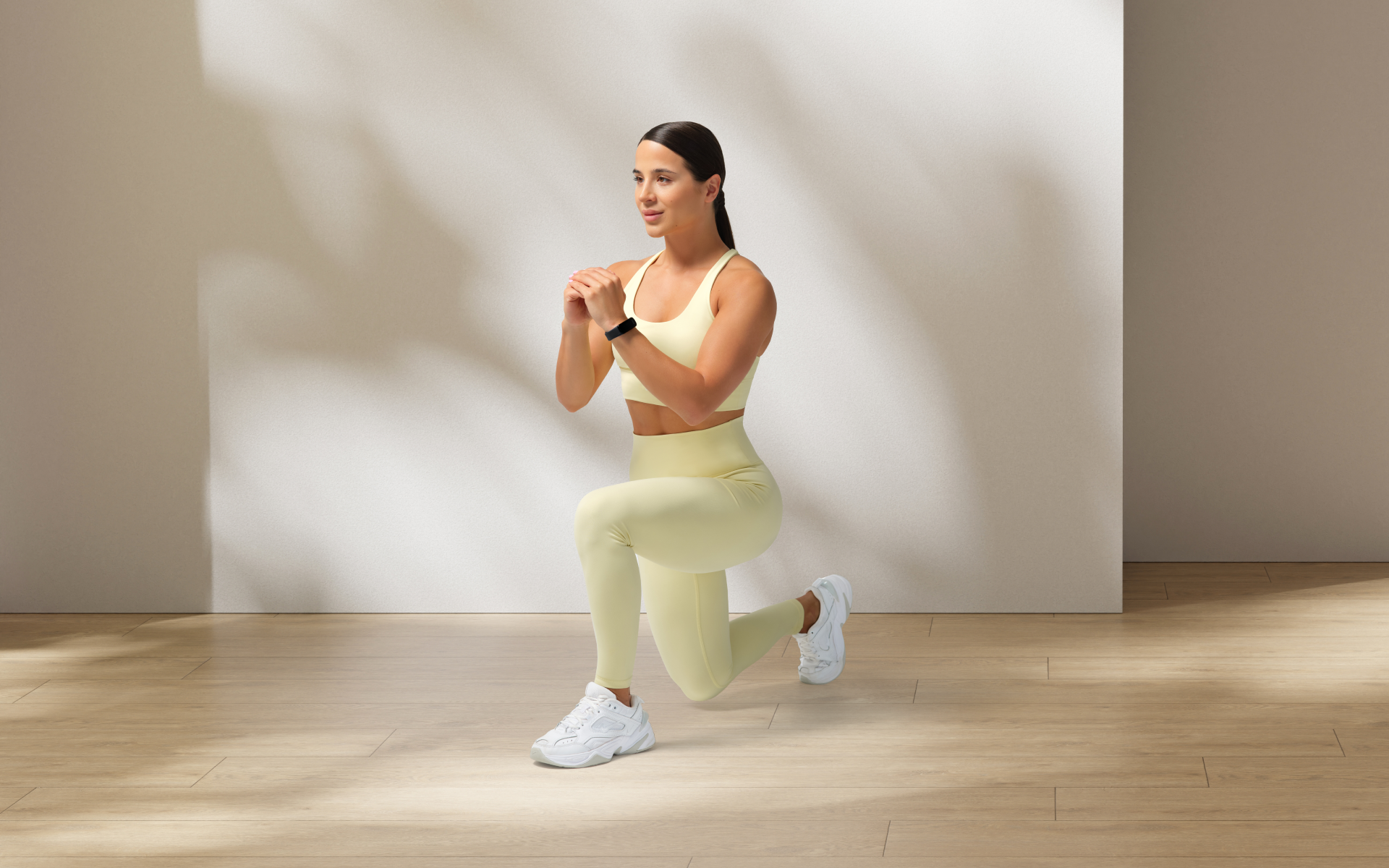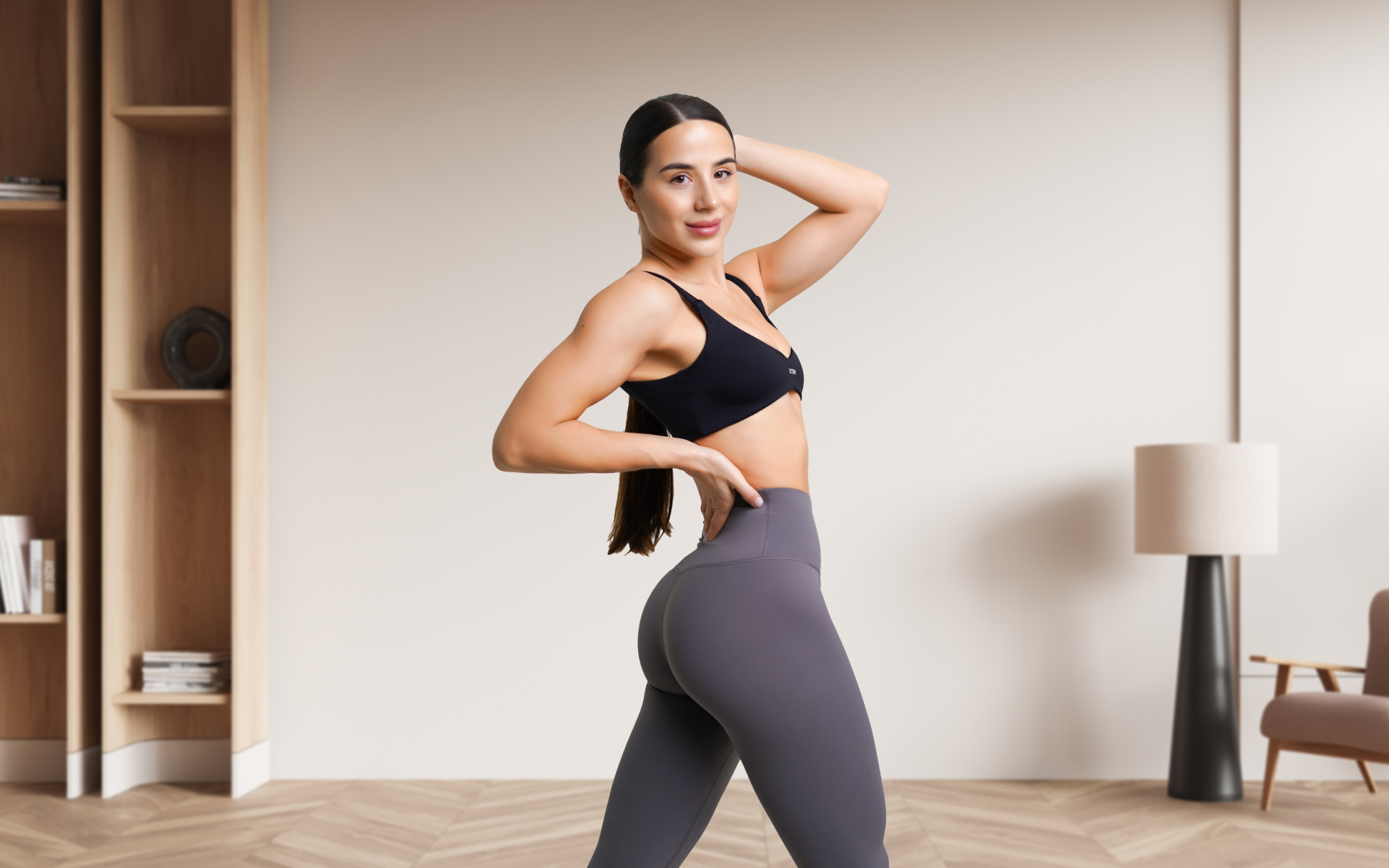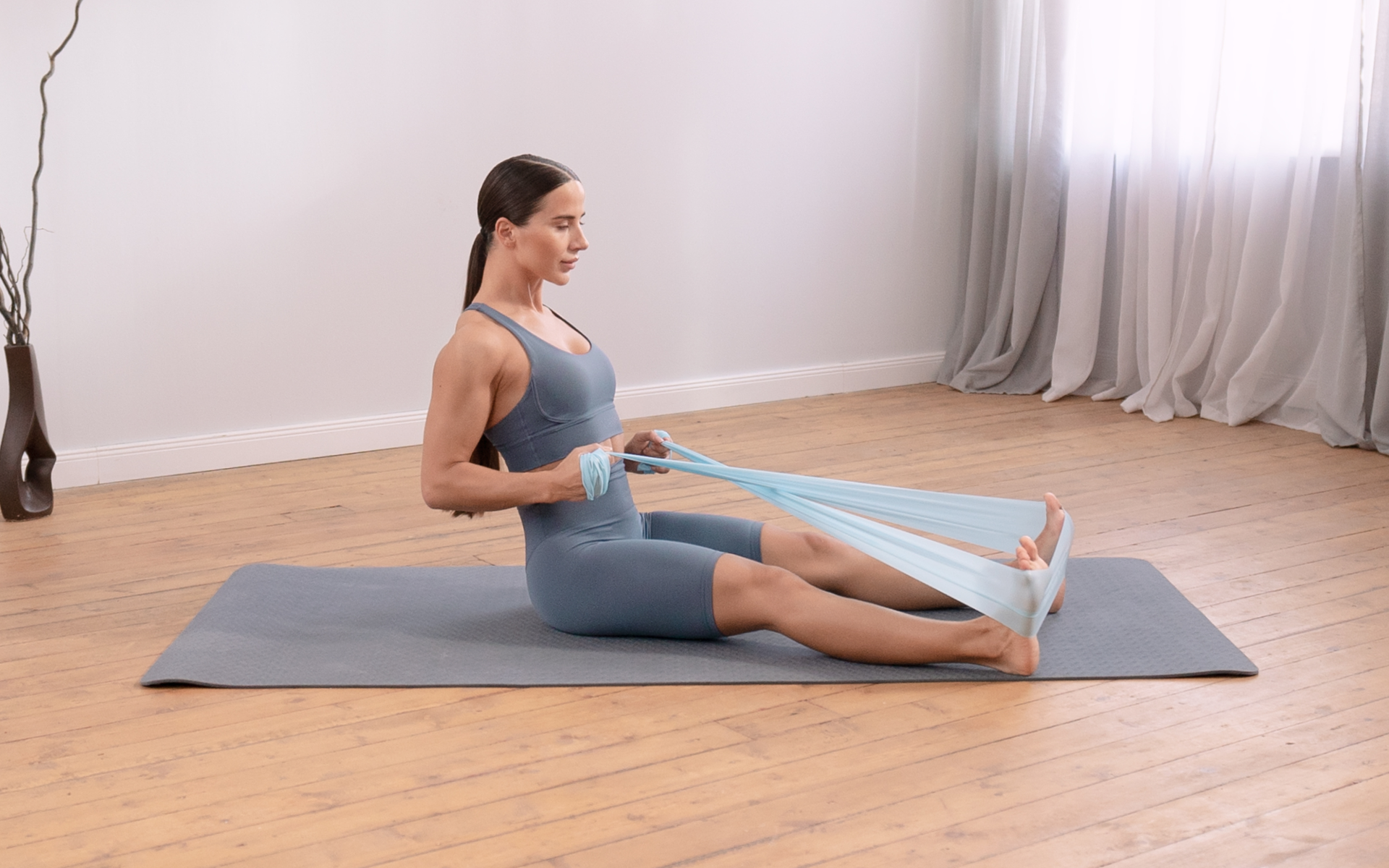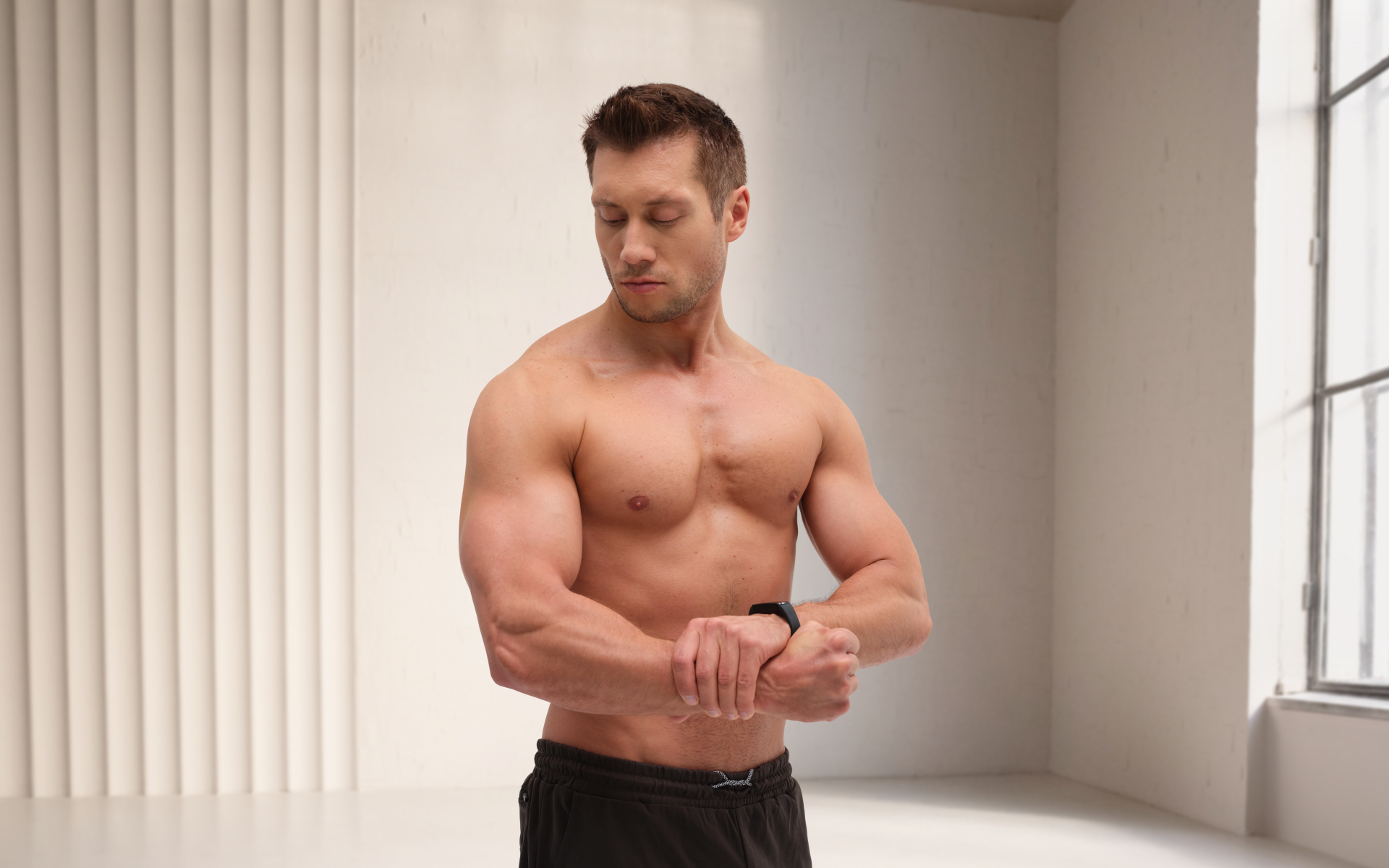Are you looking to build strong, powerful legs without hitting the gym or using heavy weights? Then a calisthenics lower-body workout may be just what you need. Calisthenics exercises utilize your body weight as resistance to strengthen your muscles, making them a fantastic option for anyone unwilling or unable to commit to a gym, as well as those who prefer at-home workouts.
Leg calisthenics exercises focus on movements that improve balance, mobility, functional fitness, and lower-body muscle strength and mass. Read on to learn what makes a powerful calisthenics leg workout, which exercises should be in such a routine for strength and mass, and much more.
What Is a Powerful Calisthenics Lower-Body Workout?
A powerful calisthenics lower-body workout is one that challenges your muscles, builds strength, boosts endurance, and improves balance – all without the use of free weights or gym machinery.
A powerful lower-body calisthenics routine should include key elements such as compound and isolation movements, progressive overload, and even plyometrics to help build your endurance and develop you as an athlete, in addition to helping you create bigger and stronger muscles.
Can You Build the Lower Body with Calisthenics?
Yes, you can. Multiple studies have shown that calisthenics can help improve muscle growth and strength in different demographics. Here are some of them:
2017
In this study, researchers were curious about the effects of calisthenics workouts on the posture, strength, and body composition in untrained individuals. They took 28 male participants and divided them into two groups – a calisthenics group and a control group. The calisthenics group exercised for 8 weeks.
All study participants underwent a body composition analysis, a postural assessment, a handgrip test, and a push-up and a pull-up test before and after the eight-week study period. After the study was completed, the findings showed that this type of bodyweight training is a feasible and effective solution to improve posture, strength, and body composition without the use of any major training equipment (1).
BetterMe: Health Coaching app helps you achieve your body goals with ease and efficiency by helping to choose proper meal plans and effective workouts. Start using our app and you will see good results in a short time.
2022
- July
In this study, researchers wanted to find out the effectiveness of calisthenics exercises on the lower body. They took 20 healthy, untrained college students and randomly divided them into a calisthenics group and a control group. The exercise group worked out 3 days a week for 2 consecutive weeks.
At the end of the study, all participants were tested for lower-body strength and endurance using the Sargent jump test and core endurance using sit-ups. Researchers found that both groups showed improvement in strength and endurance, possibly due to natural factors such as increased body awareness or motivation during testing.
They concluded that while 2 weeks of calisthenics may help with lower-body strength and endurance, the training period is too short to show significant improvement (2). This goes to show that, if you plan on doing a calisthenics lower body routine at home for mass or strength, you must commit to the program for longer than this to see any significant results.
- November
In this study, researchers wanted to see how adding calisthenics to a sedentary lifestyle would affect neuromuscular function. They found 17 healthy adults, aged between 33 and 46, and divided them into a calisthenics group and a control group. The calisthenics group was required to perform 8 sets of exercises during the working day – one set consisting of eight repetitions of five different exercises (including lower-body exercises such as squats and lunges).
At the end of the study, researchers found that breaking up a sedentary lifestyle using calisthenics helped increase the muscle strength, steadiness, and dynamic balance of study participants (3).
2024
In this study, published in the Acta Scientific Orthopaedics journal, researchers found that engaging in bodyweight exercises 4 times a week for 6 weeks led to a significant increase in upper- and lower-body strength. The researchers’ aim for this study was to find a cheap alternative exercise routine for medical students who needed to keep fit despite their busy schedules (4).
2025
In this review, researchers looking at the relevance of this workout in fitness, rehabilitation, and healthcare stated that one of the physiological benefits of calisthenics is yielding similar results in muscle growth and strength in beginners and intermediate trainers as weight training.
The researchers stated that while commonly perceived as a less effective option for hypertrophy than weight training, bodyweight training was just as good as using weights or machines (5). Therefore, if you’re considering using calisthenics lower-body workouts for mass, you can rest assured that your training will yield impressive results even without weights.
Read more: What Makes a Good Calisthenics Workout Plan?
How to Grow Bigger Legs With Calisthenics
If this is your first time venturing into bodyweight exercises for mass, here are some calisthenics leg workout tips to help you achieve the muscle mass of your dreams.
Incorporate Progressive Overload in Your Workouts
This is a training concept that requires you to gradually challenge your body and muscles with greater demands through exercise over time. It is believed to help continuously promote muscle gains and strength.
In your calisthenics leg workout for mass, you can practice progressive overload by gradually (6):
- Increasing number of repetitions per set – If you started with 3 sets of exercises with 8 reps per set, increase the number to 9 reps, then 10 reps per set
- Increasing the number of sets per workout – If you started with 3 sets per exercise, increase the number to 4 sets, then 5 sets as your strength and endurance increase.
- Increasing the intensity – In a calisthenics lower body no equipment routine, you can increase intensity by performing more challenging variations of your favorite exercises or even working out on an unstable surface
- Reducing the rest time in between sets – If you typically rest for 3 minutes between each set, reduce this rest time to 2 or 2 and a half minutes. You can continue gradually reducing this time till you are only resting for 30 seconds per set.
Do Compound and Isolation Exercises on Leg Day
Compound exercises involve multiple muscles at the same time, while isolation workouts directly target one muscle group. Combining these two forms of exercises in your calisthenics leg workout for mass routine helps you build mass as desired and also helps you create a more balanced routine that works all the muscles in the lower body.
Incorporate Multiple Variations of the Same Exercise in Your Routine
As mentioned above, progressive overload plays a big role in increasing muscle mass and strength. Challenging your body by doing harder variations of the same workout creates the intensity needed to push your body and muscles to greater heights.
An older study published in The Journal of Strength and Conditioning Research showed that incorporating exercise variations in a well-structured manner can help boost muscle hypertrophy (7).
Beginners should incorporate new variations of the same exercise every 6-12 weeks, while intermediate and advanced exercisers should do the same every 4-8 weeks.
Do a Calisthenics Lower-Body Workout Twice a Week
Several studies have shown a direct correlation between increased training frequency and muscle growth – i.e., the more you train your legs per week, the higher the hypertrophy. So if you can, try exercising your lower body on two non-consecutive days instead of simply dedicating one day a week for leg day workouts (8, 9, 10).
Read more: Your Go-To Total Body Calisthenics Workout for Functional Strength
What Are the Top 3 Lower-Body Calisthenics Exercises?
There are many calisthenics leg exercises you can do to help build strength, mass, and endurance. However, as a beginner, the top three most effective exercises we would recommend starting with include squats, lunges, and glute bridges. A routine that combines these three exercises hits all the major muscles in the lower body and gives you a well-rounded workout session.
What Is an Effective Calisthenics Lower-Body Workout?
As previously mentioned, an effective calisthenics workout will include key factors such as:
- Compound and isolation movements
- Gradual progressive overload and
- Multiple exercise variations
What else can you do to ensure that your routine will give you the desired results?
Reasons why BetterMe is a safe bet: a wide range of calorie-blasting workouts, finger-licking recipes, 24/7 support, challenges that’ll keep you on your best game, and that just scratches the surface! Start using our app and watch the magic happen.
- Try Plyometric Training
Plyometric movements are exercises that use the stretch-shortening cycle (SSC) – where a lengthening movement is quickly followed by a shortening movement to improve muscle power and speed.
This type of training often involves jumping, and common activities include in-place jumps, standing jumps, multiple hops and jumps, bounds, and drop jumps. Scientific research on the benefits of plyometric training has shown that it has the following physical benefits (11, 12, 13):
- Increased muscle strength
- Increased speed
- Improved jumping ability
- Reduced injury risk
- Improved endurance performance
This type of training also has psychological benefits, including:
- Increased confidence
- Enhanced motivation
- Improved mental resilience
Plyometric training makes your routine more effective by increasing the variation of the workouts done, in addition to the intensity of the overall workout session.
- Warm Up Before and Cool Down After Your Workout
Warm-ups help prepare the body and muscles for the upcoming workout by increasing blood flow, temperature, and muscle flexibility. On the other hand, a cool-down session helps reduce lactic acid buildup in the muscles, which can help mitigate muscle soreness and cramping (14, 15).
Taking care of your muscles before and after the main workout ensures that you reduce the risk of injury while exercising and that the muscles work as well as possible during the workout. The better the muscles are engaged while working out, the better the exercise session and results.
Can You Just Train the Lower Body?
Yes, you can, but it’s not advisable. Training only one section of the body, such as the lower body, can lead to muscle imbalance.
Muscle imbalance is a condition where some muscles are shorter, less flexible, or weaker than the surrounding muscles, and according to research, it can lead to increased risk of injury, joint pain, posture problems, and much more (16, 17, 18, 19).
To avoid this, it’s recommended that you also exercise other parts of the body too, such as the core and the upper body (push and pull muscles). If you’re doing a split routine, you can do one or two days of just lower-body workouts and dedicate the other three or four days to core and upper-body workouts.
If you prefer full-body workouts, ensure your lower-body calisthenics exercises are part of a balanced routine that targets all the major muscles in the body, not just your legs and glutes.
Remember to also get 24 to 48 hours of rest every week to avoid the risk of overtraining (20).
Yes, you can. As demonstrated by the multiple studies mentioned above, calisthenics helps with muscle strength, mass, and endurance. Some calisthenics calf exercises you can do include: Yes, you can. While squats are the go-to for many lower-body workouts for mass, they aren’t the only option that’s available. Other exercises that you can do include: It could be due to preference and aesthetics. On some online forums, you’ll see men mention how they simply “hate leg day”, while others chime in and say that they don’t see the benefit of training legs, as aesthetically, a bigger upper body is seen as more attractive in men than in women. In a review published in early 2023 in The Journal of Strength & Conditioning Research, researchers also mentioned that men have a greater preference for competitive, high-intensity, and upper-body exercise, while women have a greater preference for supervised and lower-body exercise (23). Regardless of your gender or preference, you should remember that ignoring exercising some body parts will only lead to muscle imbalance, which is aesthetically unappealing and also increases your risk of injury, joint pain, posture problems, etc. As mentioned above, doing this will increase the risk of muscle imbalance.Frequently Asked Questions
Can you grow your calves with calisthenics?
Can you get big legs without squats?
Why do guys skip leg day?
What happens when you only work out your lower body?
The Bottom Line
A calisthenics lower-body workout routine is cheap and when it’s done right, it’s an effective way to help build your muscle mass, strength, and endurance without weights or machines. To hit your desired goals with such a routine, remember to do both compound and isolation exercises, you should practice progressive overload, be consistent with your routine, and increase your protein intake to help support muscle growth and recovery.
DISCLAIMER:
This article is intended for general informational purposes only and does not serve to address individual circumstances. It is not a substitute for professional advice or help and should not be relied on for making any kind of decision-making. Any action taken as a direct or indirect result of the information in this article is entirely at your own risk and is your sole responsibility.
BetterMe, its content staff, and its medical advisors accept no responsibility for inaccuracies, errors, misstatements, inconsistencies, or omissions and specifically disclaim any liability, loss or risk, personal, professional or otherwise, which may be incurred as a consequence, directly or indirectly, of the use and/or application of any content.
You should always seek the advice of your physician or other qualified health provider with any questions you may have regarding a medical condition or your specific situation. Never disregard professional medical advice or delay seeking it because of BetterMe content. If you suspect or think you may have a medical emergency, call your doctor.
SOURCES:
- The effects of a calisthenics training intervention on posture, strength and body composition (2017, researchgate.net)
- Effectiveness of Calisthenics Training on Lower Body Strength and Endurance among College Students (2022, ijsdr.org)
- The Effect of Breaking Up Sedentary Time with Calisthenics on Neuromuscular Function: A Preliminary Study (2022, pmc.ncbi.nlm.nih.gov)
- Effectiveness of Calisthenics Exercise Protocol on Upper and Lower Limb Strength in Medical College Students After 6 Weeks -A Pilot Study (2024, actascientific.com)
- A Comprehensive Review of Calisthenics: Evolution, Science, and Practice (2025, ijcrt.org)
- Progressive overload without progressing load? The effects of load or repetition progression on muscular adaptations (2022, pmc.ncbi.nlm.nih.gov)
- Nonuniform Response of Skeletal Muscle to Heavy Resistance Training (2000,
- Effects of Resistance Training Frequency on Measures of Muscle Hypertrophy: A Systematic Review and Meta-Analysis (2016, pubmed.ncbi.nlm.nih.gov)
- Resistance training frequency and skeletal muscle hypertrophy: A review of available evidence (2019, sciencedirect.com)
- How many times per week should a muscle be trained to maximize muscle hypertrophy? A systematic review and meta-analysis of studies examining the effects of resistance training frequency (2019, pubmed.ncbi.nlm.nih.gov)
- Effects of Plyometric Training on Physical Performance: An Umbrella Review (2023, sportsmedicine-open.springeropen.com)
- The Role of Plyometric Training in Improving Explosive Power in Sprinters: A Qualitative Analysis (2024, researchgate.net)
- Plyometric exercises training improve psychological and physical performance among rugby and soccer players: a comparative study (2025, tandfonline.com)
- Warm Up, Cool Down (2024, heart.org)
- Warm up and cool down activities (2024, nhsinform.scot)
- Changes in Muscle Activity Imbalance of the Lower Limbs Following 3 Weeks of Supplementary Body-Weight Unilateral Training (2021, mdpi.com)
- Occurrence of Muscle Imbalance and Risk of Injuries in Athletes using Overhead Movements: A Systematic Review (2021, researchgate.net)
- Muscle imbalances – fact or fiction? (2006, journals.sagepub.com)
- Prevalence and distribution of muscle-imbalance in the human body: A review (2004, ajol.info)
- Overtraining Syndrome (2012, pmc.ncbi.nlm.nih.gov)
- Narrative Review of Sex Differences in Muscle Strength, Endurance, Activation, Size, Fiber Type, and Strength Training Participation Rates, Preferences, Motivations, Injuries, and Neuromuscular Adaptations (2023, pubmed.ncbi.nlm.nih.gov)
